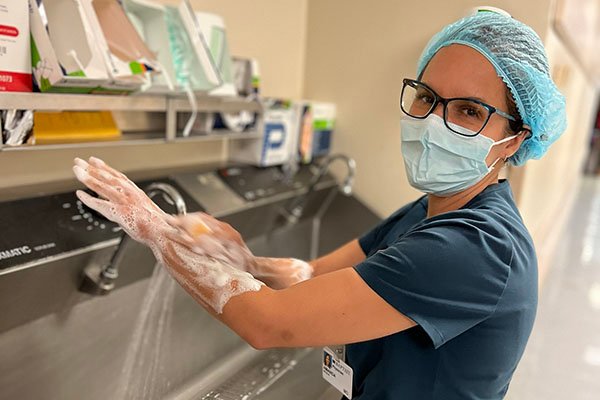Expecting a baby is a joyous experience in a woman’s life! At The Woman’s Clinic, we feel privileged to be a part of this miraculous journey. Many questions arise, and one that we must address during every pregnancy is a delivery method. Although vaginal delivery is the preferred route in most cases, today, we will discuss the common questions we receive around cesarean delivery. All 3 of my babies had to be delivered via c-section, so I have personal experience!
What is a c-section?
In its most basic form, a c-section is a surgery performed to deliver a fetus. Most commonly, a horizontal incision (or bikini cut) is made in the lower abdomen and is extended down into the underlying tissues to expose the uterus. An incision is made into the uterus to deliver the infant and placenta. All the layers are then closed with sutures.
Why would I need a c-section?
There are many reasons why a c-section may be necessary. Some of the most common indications, but certainly not all, are listed below:
- Labor is not progressing normally. The cervix stops dilating, or the fetus is not descending through the birth canal as expected. This may signify that the baby is too large or not positioned well or that the mother’s pelvis may be too small or not shaped advantageously for vaginal birth.
- There is concern about the well-being of the fetus. The fetal heart rate might drop, indicating the baby is stressed. Umbilical cord compression and placental issues could cause this.
- Placental problems sometimes necessitate a c-section. For example, placenta previa is when the placenta is covering the cervix.
- The fetus is not positioned appropriately (breech or transverse). The fetus should be pointing head down to safely reach the birth canal.
- Maternal medical conditions could interfere with being able to deliver vaginally safely.
What should I expect if I must be delivered by c-section?
If you are already in labor and have an epidural, the anesthesiologist will administer additional medication through the epidural catheter to provide adequate pain control during the surgery. If the c-section is scheduled or you do not yet have an epidural, the anesthesiologist will perform a spinal block. They will inject medication into your back directly into the spinal fluid. This will cause numbness in the lower part of the body. With these two options, you can be awake during surgery to hear and see your baby as soon as he or she is born! Another option would be general anesthesia, where you would be asleep during surgery. This is rarely needed for c-sections.
You can expect an IV, a catheter draining the bladder, and massaging leg sleeves to prevent blood clots. Your tummy will be washed with soap to sterilize the skin, and surgical drapes will be placed to ensure sterile conditions for surgery. You may have one person in the operating room to support you. After the baby is delivered, the nursery team will weigh, measure, and assess the baby. Next, the baby is given to your support person, who brings the baby to you while the surgery is being completed, so you may have some time immediately with your baby. I have to brag on the nurses and the anesthesia team, who have become excellent delivery photographers! They will happily use your phone to take photos of you and your new bundle of joy.
When the surgery is completed, the baby is taken to the recovery room with your support person to await your arrival. When your bandages are applied, and you are ready for transport, you will be taken to the recovery room on a stretcher. Now, you may start skin-to-skin time with the baby. You can also begin to breastfeed. The Labor and Delivery nurses are wonderful and are there to help you every step of the way.
What is the recovery like after a c-section?
After monitoring in the recovery room, you will be taken to the postpartum unit for the remainder of your hospital stay. Soreness is to be expected after a c-section. We give several different medications, all breastfeeding safe, to help alleviate post-operative pain. Common complaints include mild nausea after surgery from anesthesia, cramping (especially when breastfeeding), vaginal bleeding for a few weeks, and numbness of the skin around the incision. You can expect to stay in the hospital for two days or longer. Most patients feel much better within two weeks, but most do not feel fully healed for about six weeks.
What are the risks of having a c-section?
Like any surgery, c-sections come with risks. Although rare, patients who undergo c-sections are more likely to get infections, have more bleeding, develop a blood clot, and have an injury to internal organs. C-sections may also lead to complications in future pregnancies. To allow the uterus to heal fully, we generally recommend waiting 18 months after a c-section to become pregnant again.
Final thoughts
Although c-section is not the preferred mode of delivery in most cases, I consider it a lifesaving procedure for many women and babies. We strive to make every birth story a safe, healthy, and special once-in-a-lifetime experience. Please talk to your doctor at The Woman’s Clinic about what might be best for you and your baby.




 Close
Close